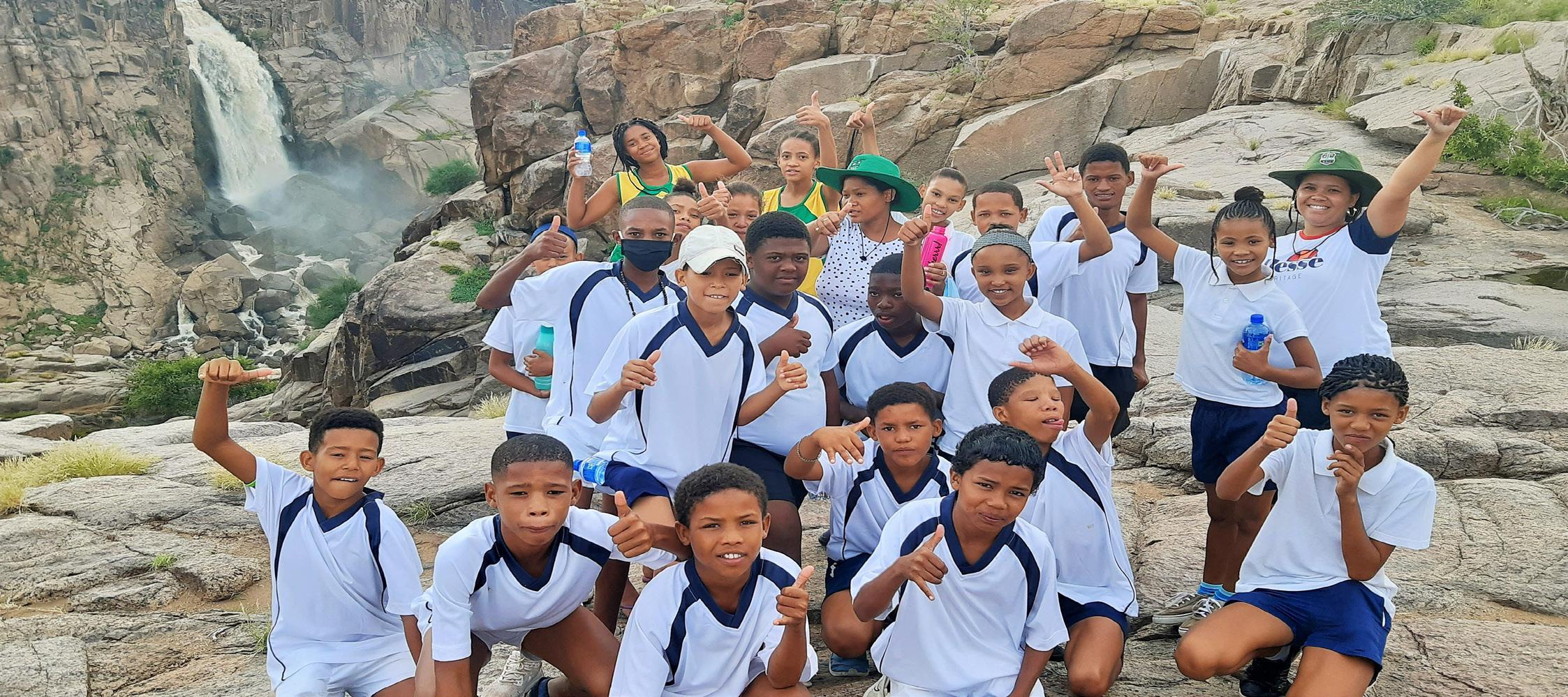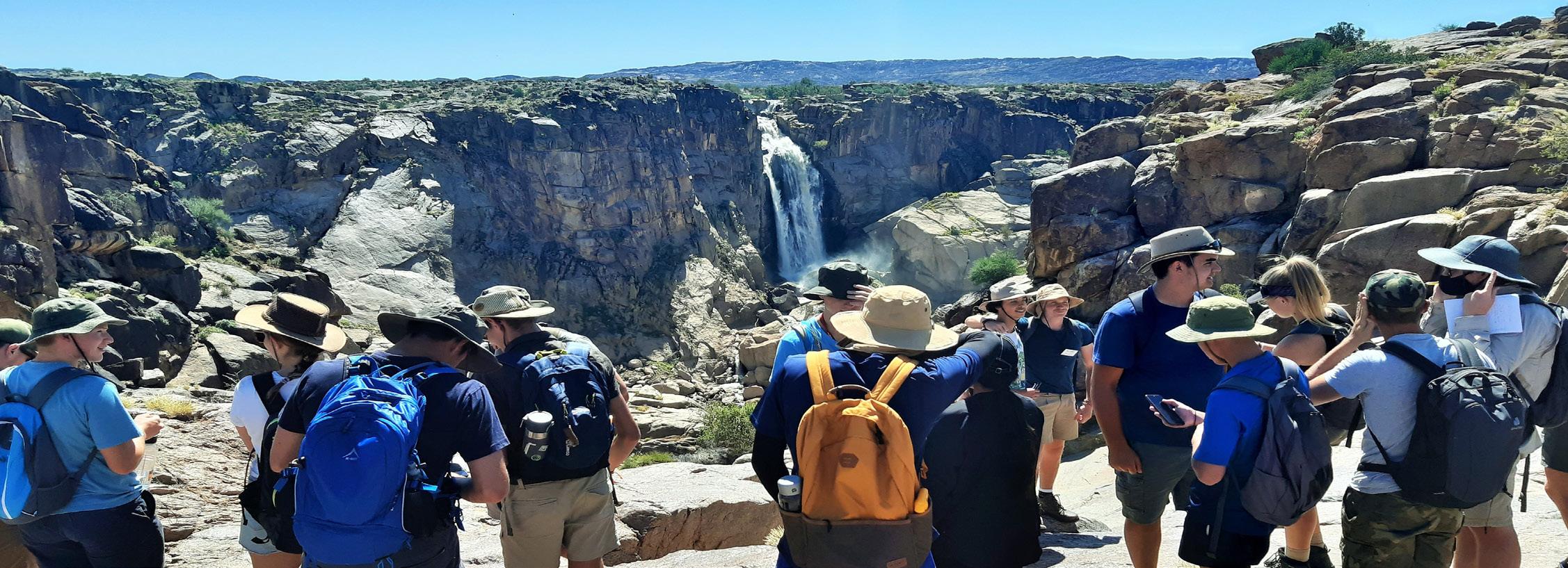
4 minute read
ARID NEWS
Our connection with forests and water
By Christine du Plessis
Advertisement
At Augrabies Falls National Park the recently celebrated International Day of Forests and World Water day focused on the importance of forest ecosystems, their biodiversity, their protection and our total dependence on water.
In partnership with the National Department of Forestry, Fisheries and the Environment, the focus was placed on the different types of forests, and specifically on the Kathu and Quiver tree forests and the protected tree species of the Northern Cape. During an in-depth presentation to the Environmental and Tourism Monitors currently on training in Augrabies, Ms Jacoline Mans (DFFE) explained the intricacies of the overlapping laws, the importance of maintaining forests and the immense challenges facing some of the protected tree species in the Northern Cape, such as the Quiver tree, Camel thorn, Ebony tree and Shepherds tree. As part of the programme, the Environmental Monitors and Tourism Monitors will be taken to the local Koms Quiver tree nursery where they will experience the entire process of the legal propagation of Quiver trees.
The Grade 7 learners of Soverby Primary school were in the park for an overnight environmental
Soverby Primary School learners being introduced to the world of forests and water
excursion and were introduced to the wonderful world of forests. During an icebreaker activity, the use of everyday products from trees were used to explain how dependent we are on trees and forests. On completion of the information session, a Searsia pendulina (White Karee) tree was planted in the rest camp by the learners and they were each given two packets of seeds from which they could cultivate their own ‘forests’.
The following day the Grade 7 learners and two educators were taken on the Dassie interpretive trail. They were introduced to the intricate adaptations of many of the plants in the Arid region to conserve as much moisture as possible. This was followed up by an interactive presentation in the rest camp on the available water in the water cycle, what humans use water for and how water is wasted. Learners then provided their own solutions to save water and not waste such a precious commodity. It was emphasized that although we have the right to clean drinking water we also have the responsibility to conserve as much water as possible. To keep them aware of how easily water can be wasted, they were each given a three minute sand timer to use when they shower or wash.
By Christine du Plessis
In December 2013 the United Nations General Assembly declared 3 March as World Wildlife Day. This was so that special focus could be placed on species under threat of becoming endangered or extinct. Worldwide it is estimated that approximately 1 million species have become extinct. In South Africa there has been a decline in species and ecosystems, with 12% of SA’s species categorised as being endangered.
The Augrabies Falls National Park celebrated World Wildlife Day together with 40 students and two lecturers from the Academy for Environmental Leadership (AEL) at Uizip, near Upington, during a visit to the park.

The students were taken on the Dassie interpretive trail, where special focus was placed on the intricate and amazing adaptations of plant species to be able to conserve water and subsequently survive in arid conditions. Whilst on the trail, the students were also introduced to three of the four protected tree species in the park, namely Aloidendron dichotomum (Quiver tree), Boscia albitrunca (Shepherds tree) and Euclea pseudebenus (Ebony tree). All three species are under threat in the Northern Cape.
Academy for Environmental leadership students taking in the spectacular vistas in the park
After lunch in the great outdoors, the students attended a presentation on World Wildlife Day with the theme of ‘Recovering key species for ecosystem restoration’. A number of Northern Cape species which are facing diverse threats were highlighted. This was in an effort to bring awareness amongst the students of the local situation and to encourage them to become active in protecting these local species and creating awareness. Some of the species that were highlighted were the Camelthorn, Quiver, Ebony and Shepherds trees. All four are protected trees which face large scale habitat destruction through either agriculture, mining or solar farming developments. Then there are the Conophytum and other succulent species in Namaqualand that are being ruthlessly poached by collectors, generating a value far higher than the rhino horn trade and the pangolin, which is being poached mercilessly for its scales. Finally there is the Riverine rabbit which has basically lost all its habitat due to livestock farming. This is one of the world’s most endangered species with only about 500 left.
The final message for the students was to be informed and to protect and conserve our species diversity. This will help to ensure the survival, not only of our natural ecosystems, but also the human race.




